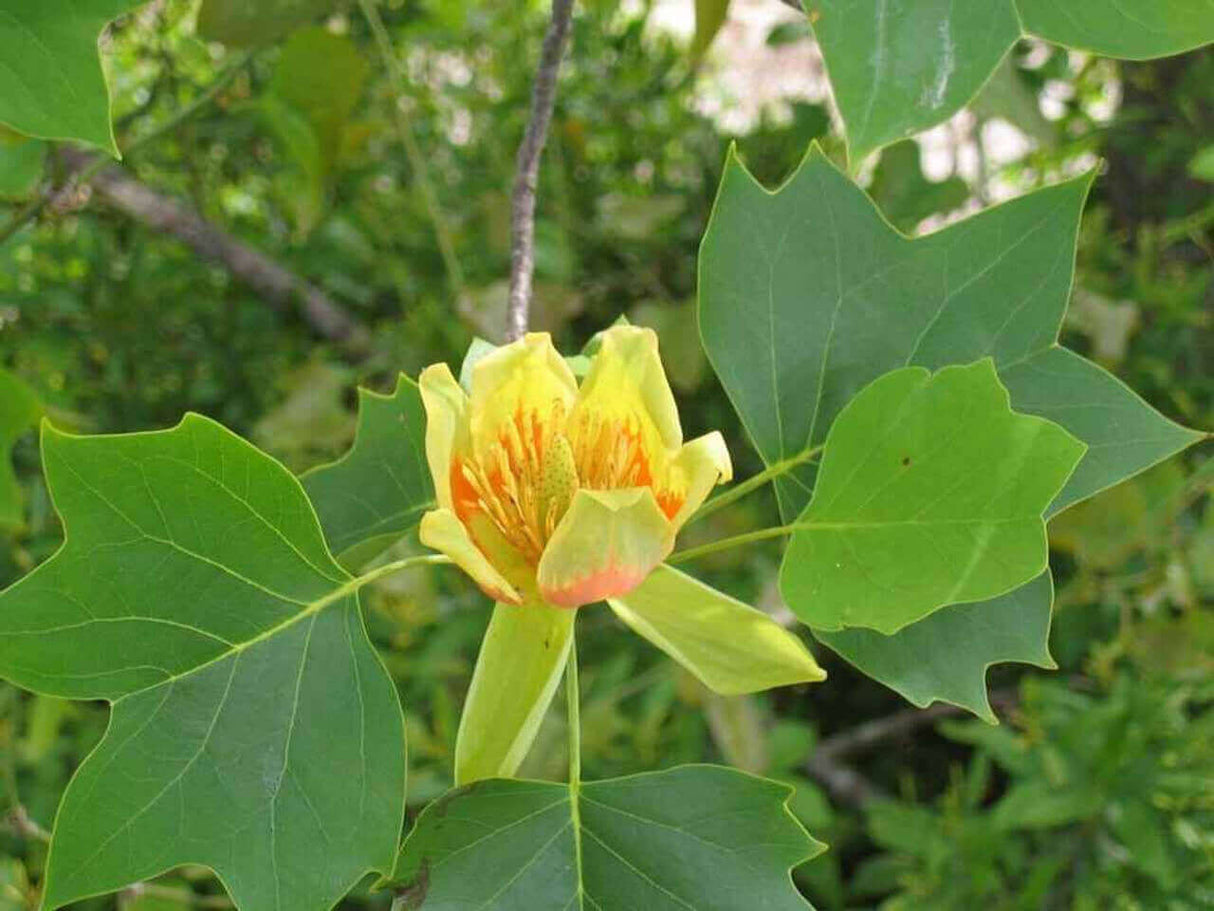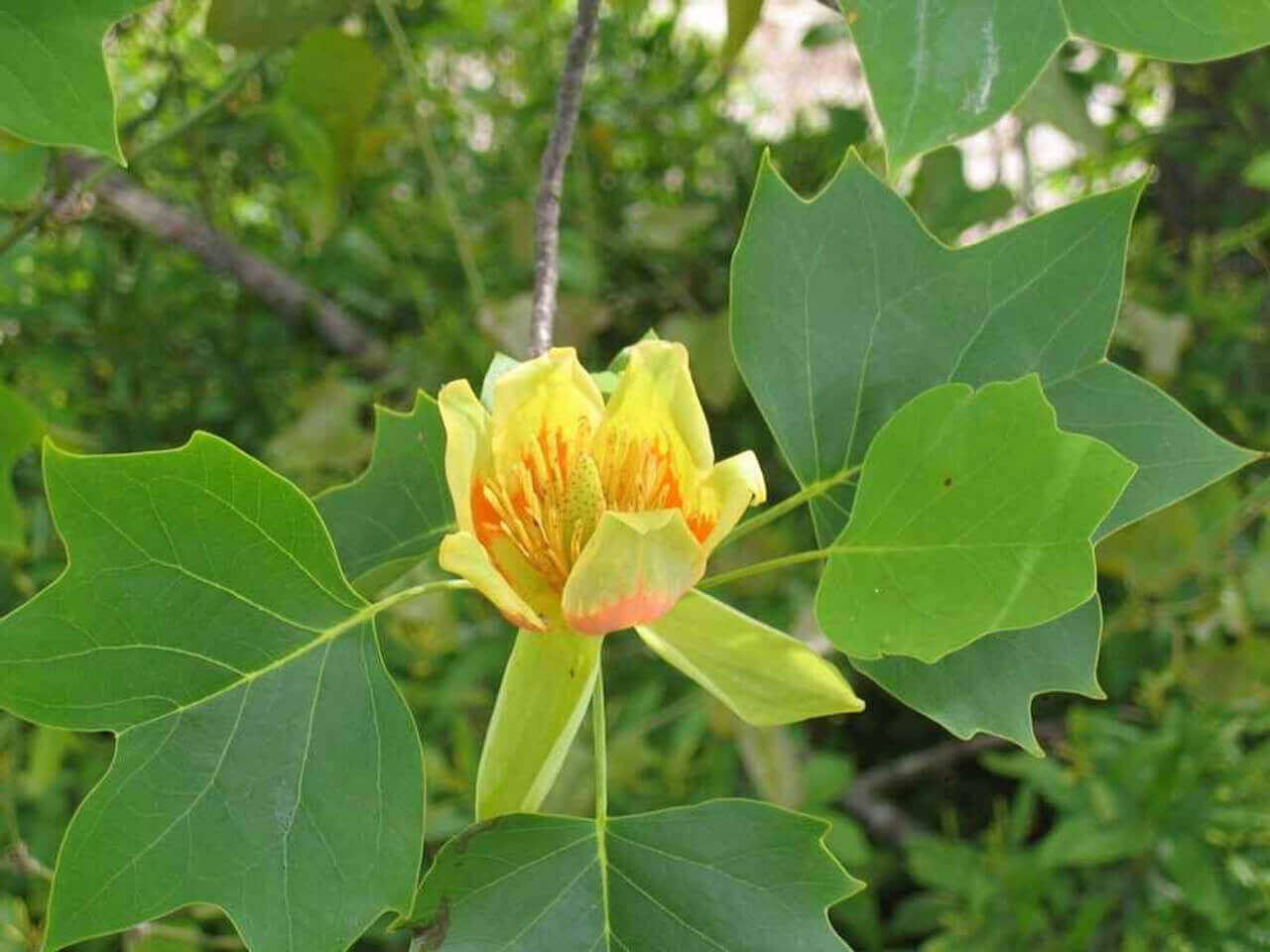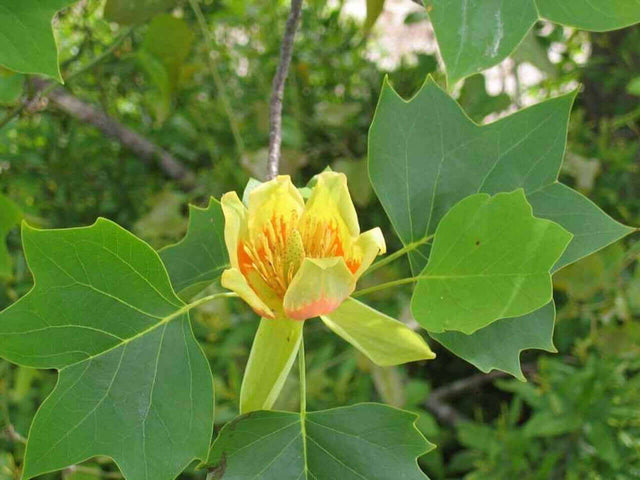Poplar, Tulip, Bare Root
Fast-Growing Canopy Tree with Tulip Blooms
Poplar, Tulip, Bare Root - Bare Root / 6-18" Seedling is backordered and will ship as soon as it is back in stock.
Couldn't load pickup availability
Delivery and Shipping
Delivery and Shipping
Make sure to thoroughly review our entire "Shipping, Returns, Refunds, and Our Guarantee" page for all relevant details about ordering from our store.
Making a purchase from our store constitutes an agreement to all the conditions outlined in those policies.
We appreciate your support and look forward to being your favorite plant provider!
Subscribe to our newsletter
Sign up for exclusive offers.
Tulip Poplar (Liriodendron tulipifera)
Also known as Tuliptree or Yellow Poplar, Liriodendron tulipifera is a stately, fast-growing native hardwood prized for its towering form, striking tulip-shaped flowers, and immense ecological value. Native to the eastern U.S., Tulip Poplar is one of the tallest eastern deciduous trees, thriving in moist, well-drained soils. It supports pollinators, birds, and beneficial insects, making it an essential species for reforestation, riparian buffers, and large-scale regenerative plantings.
Key Characteristics
-
Early-summer blooms for bees and hummingbirds
Despite its great height, the large, tulip-shaped flowers—yellow-green with orange centers—produce copious nectar that feeds native bees, honeybees, and hummingbirds. Blooming in late spring to early summer, Tulip Poplar helps bridge a seasonal nectar gap. -
Fast growth for canopy development and carbon capture
Tulip Poplar is one of the fastest-growing native hardwoods, capable of adding several feet per year in height. It is excellent for quickly establishing canopy in reforestation and food forest systems, and it contributes significantly to long-term carbon sequestration. -
Supports diverse native insect life
While not a major host plant compared to oaks or willows, Tulip Poplar still supports native insects and provides nesting and foraging habitat for birds and other wildlife. The large leaves create dense shade, helping cool soils and create understory microclimates. -
Straight, tall form for timber and windbreaks
With its columnar trunk and upward-branching habit, Tulip Poplar produces strong, lightweight wood historically used for furniture, siding, and canoes. Its structure also makes it useful in windbreaks and buffer zones. -
Glowing yellow fall foliage and seasonal beauty
In autumn, its large, uniquely lobed leaves turn a clear, bright yellow, adding brilliant color to forest edges and landscape plantings. Its tall form adds drama and vertical structure in both natural and designed systems.
Product Details
- Native range: Eastern U.S., from the Great Lakes to the Gulf Coast
- Plant life cycle: Deciduous Tree
- Sun requirements: Full sun
- Soil requirements: Medium to medium-wet; prefers deep, moist, well-drained soils
- Mature height: 70–120 feet
- Bloom time: Late spring to early summer
- Bloom color: Yellow-green with orange centers
- USDA Hardiness zones: 4–9
Tulip Poplar is a fast-growing native hardwood that delivers shade, nectar, wildlife support, and visual beauty in equal measure. A powerful choice for canopy restoration and regenerative plantings where speed and ecological function matter.
-
Sun RequirementsFull Sun, Part Sun/Shade
-
Soil RequirementsMedium, Medium-Wet
-
Bloom ColorGreen, Yellow
-
Bloom TimeMay, June
-
USDA Hardiness ZonesZone 4, Zone 5, Zone 6, Zone 7, Zone 8, Zone 9+
-
Native StatesVermont, New York, Pennsylvania, Ohio, Indiana, Illinois, Missouri, Kentucky, Tennessee, Virginia, West Virginia, North Carolina, South Carolina, Georgia, Alabama, Mississippi, Arkansas, Louisiana
Payment & Security
Payment methods
Your payment information is processed securely. We do not store credit card details nor have access to your credit card information.




